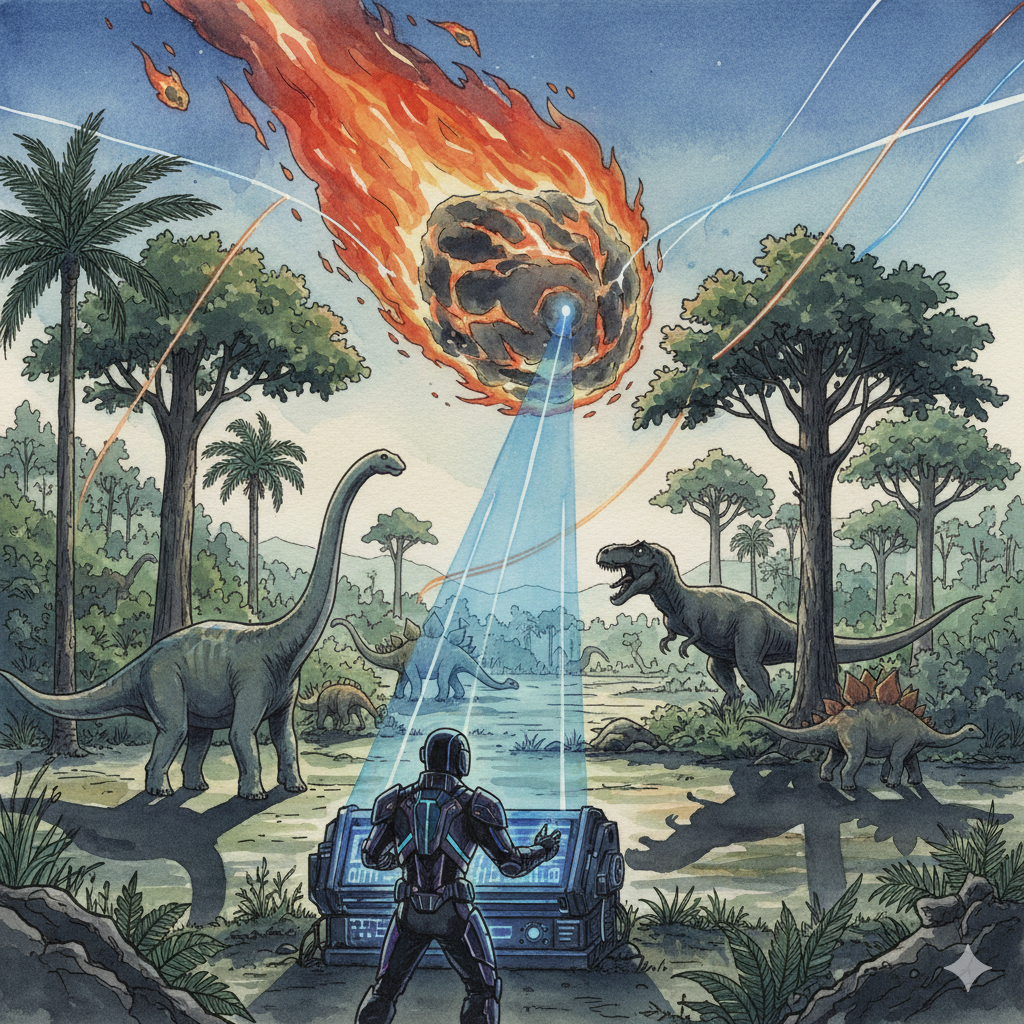Origins and Geological Setting
Approximately 66 million years ago, at the close of the Cretaceous Period, Earth experienced a rapid and dramatic environmental upheaval recorded worldwide in a thin geologic layer known as the K–Pg (formerly K–T) boundary. That layer contains anomalously high concentrations of iridium, shocked minerals, and spherules of impact melt—signatures that point to an extraterrestrial impact as a central trigger. The Chicxulub crater beneath the Yucatán Peninsula, identified in the late twentieth century and later confirmed by drilling and detailed stratigraphic work, provides the most plausible locus for an impactor roughly 10 to 15 kilometers in diameter whose energy release rivaled millions of nuclear detonations. This sudden event occurred against a background of other global stressors—fluctuating sea levels, regional volcanism such as the Deccan Traps in India, and climate variability—so the K–Pg extinction reflects both abrupt catastrophic forcing and longer-term environmental pressures.
Immediate Environmental Effects
The impact's instantaneous effects were catastrophic on regional and global scales: an enormous airburst and blast wave, giant tsunamis, widespread wildfires, and an ejecta plume that lofted dust, aerosols, and sulfates into the atmosphere. These materials reduced incoming sunlight, producing a dramatic drop in photosynthetically active radiation and causing a collapse of primary productivity on land and in the oceans. Short-term cooling and darkness, paired with ocean acidification and disruption of food chains, precipitated the mass mortality of organisms dependent on photosynthesis or on trophic links that quickly unraveled. Acid rain and climatic perturbations compounded the damage, while long-lived climatic responses and ecological cascades extended the crisis across years to decades.
Patterns of Extinction and Survival
The extinction profile at the K–Pg boundary was selective rather than indiscriminate: all non-avian dinosaurs disappeared, along with many marine ammonites, large marine reptiles, and substantial portions of planktonic organisms, corals, and other groups. Organisms with small body sizes, generalized diets, burrowing or freshwater habits, and the capacity to exploit detrital or microbial resources tended to fare better, as did many groups of mammals, crocodilians, turtles, and birds (avian dinosaurs). The selective pattern reveals how life-history traits and ecological flexibility shaped survivorship under extreme global stress, and it emphasizes that extinction events are filters that reshape evolutionary trajectories by removing dominant clades and opening ecological opportunities for survivors.
Evolutionary Aftermath and Mammalian Radiation
With the disappearance of large non-avian dinosaurs and the collapse of many Mesozoic ecological dominants, vast ecological niches were vacated. Surviving lineages—mammals among them—underwent adaptive radiations into newly available modes of life. Over the Paleogene period that followed, mammals diversified rapidly in body size, dietary specializations, and locomotor strategies, giving rise to the major orders that characterize modern terrestrial ecosystems: primates, ungulates, rodents, cetaceans, and many others. This shift inaugurated the Cenozoic as the "Age of Mammals," a broad reconfiguration of terrestrial and marine ecosystems that ultimately set the deep biological context for the evolution of hominins and, far later, human civilization.
Paleobiological and Geological Significance
The K–Pg event is a touchstone for understanding mass extinctions as drivers of macroevolutionary change. It illustrates how sudden, high‑magnitude physical events can produce rapid biotic turnover, how extinction selectivity shapes the subsequent course of evolution, and how Earth systems—atmosphere, oceans, and biosphere—interact under extreme perturbation. Geologically, the K–Pg boundary provides a globally correlatable horizon that marks a major periodization shift from the Mesozoic to the Cenozoic and serves as a case study in interpreting stratigraphic, geochemical, and impact-related evidence.
Broader Lessons and Contemporary Relevance
Beyond paleontology and geology, the K–Pg extinction carries broader conceptual lessons about resilience, contingency, and the interplay of gradual processes and sudden shocks in deep time. The event demonstrates that contingent catastrophes can redirect evolutionary histories and that biological dominance is not permanent. In contemporary terms, studying the K–Pg extinction sharpens understanding of how rapid environmental change—whether from volcanism, impacts, or anthropogenic forcing—can destabilize ecosystems and eliminate biodiversity. It also underscores the value of Earth‑system science in anticipating the complex feedbacks that follow severe perturbations.
Conclusion
The extinction at the Cretaceous–Paleogene boundary stands as one of Earth's most consequential biological turnovers: a sudden, planet‑scale crisis that extinguished iconic clades, disrupted ecosystems, and created evolutionary space for mammals and ultimately humans. Its geological fingerprints and biological legacies make the K–Pg event a central episode for interpreting how catastrophic events shape the long arc of life on Earth and why contingency and adaptability remain central themes in the story of evolution.
